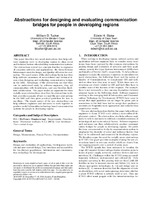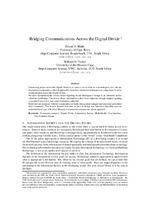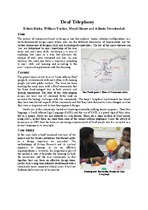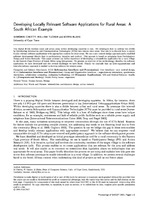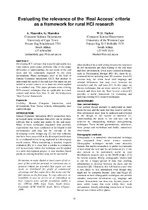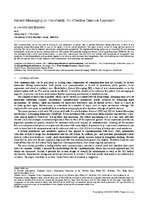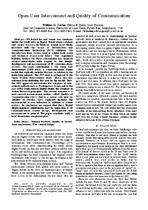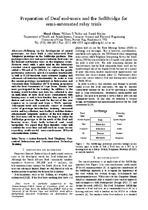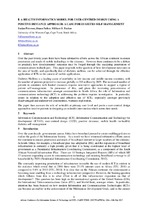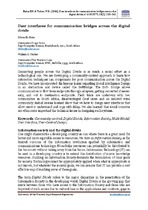Browsing by Subject "User-centred design"
Now showing items 1-10 of 10
-
Abstractions for designing and evaluating communication bridges for people in developing regions
(ACM, 2010)This paper describes two novel abstractions that help soft- ware engineers work in developing regions to align social and technical factors when building communication systems. The abstractions extend two concepts familiar ... -
Bridging communications across the digital divide
(CTIT, 2004)Connecting people across the Digital Divide is as much a social effort as a technological one. We are developing a community-centered approach to learn how interaction techniques can compensate for poor communication across ... -
Deaf telephony: community-based co-design
(Wiley, 2011)The process of community-based co-design is one that explores various solution configurations in a multi-dimensional design space whose axes are the different dimensions of requirements and the various dimensions of designer ... -
Developing locally relevant applications for rural areas: a South African example
(SAICSIT, in assocation with ACM, 2004)The digital divide between rural and urban areas within developing countries is vast. We investigate how to address this divide by introducing Information and Communication Technologies (ICTs) into remote rural areas. Our ... -
Evaluating the relevance of the “Real Access” criteria as a framework for rural HCI research
(ACM, 2006)Developing ICT software that is useful and usable in a rural context poses many problems. One of the major difficulties is understanding the real needs of the target users and the constraints imposed by the rural environment. ... -
Instant messaging on handhelds: an affective gesture approach
(SAICSIT in association with ACM, 2005)Text communication can be perceived as lacking in chat spontaneity, or plastic, due to medium limitations during interaction. A form of text messaging, Instant Messaging (IM), is now on the uptake, even on mobile handhelds. ... -
Open user interconnect and quality of communication
(Telkom, 2004)We looked for and found two situations within the South African Digital Divide where constant and severe macro-scale latencies would most likely interfere with the usage of Information and Communication Technology (ICT) ... -
Preparation of Deaf end-users and the softbridge for semi-automated relay trials
(Telkom, 2004)Following on the development of several prototypes, we have built a semi-automated Deaf Telephony prototype on the SoftBridge platform. This prototype relays text and speech between Deaf users on the Internet and hearing ... -
Towards a model for user-centred design using a positive deviance approach: A case for diabetes self-management
(University of Cape Town, 2017)Over the past twenty years there have been substantive efforts across the African continent to ensure penetration and reach of mobile technology to the citizenry. However there continues to be a debate on precisely how ... -
User interfaces for communication bridges across the digital divide
(Springer-Verlag, 2006)Connecting people across the Digital Divide is as much a social effort as a technological one. We are developing a community-centred approach to learn how interaction techniques can compensate for poor communication across ...

